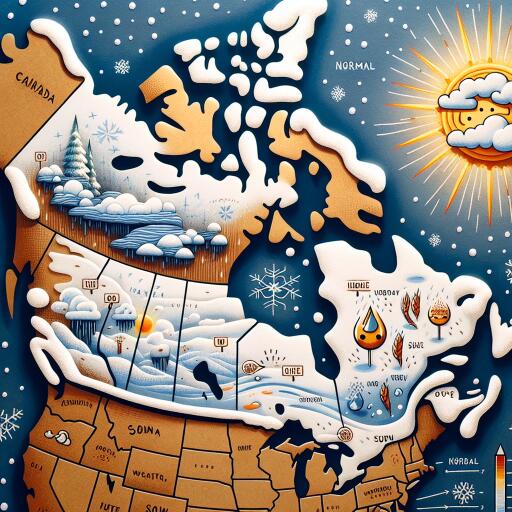
Canada’s Winter Forecast: A Return to Normalcy with a Warmer Twist
As the weather transitions this winter, Canadians will notice the departure of the El Niño phenomenon—responsible for last year’s extraordinary warmth—giving way to the cooler and more unpredictable La Niña conditions. This shift is expected to bring a more traditional winter experience for many across Canada, though several regions will still witness above-normal temperatures. Northern Ontario, Quebec, Nunavut, and Newfoundland and Labrador are among the areas likely to see warmer-than-usual conditions.
Particularly of interest is Hudson Bay, where sea ice formation may experience delays, a stark indicator of the region’s above-normal temperature projections. This tendency is closely related to ongoing climate change. Meanwhile, other regions will start the season with potentially above-average temperatures, particularly in the Prairies and British Columbia. However, by late February, conditions are anticipated to return to what is typically expected. In Quebec and the Maritimes, early winter may be marked by reduced snowfall, whereas the Western regions, along with the Northwest Territories and Yukon, might encounter wetter conditions than normal.
La Niña usually influences increased precipitation along the West Coast and the Rockies, which this year could offer some relief to areas plagued by droughts and wildfires. The Atlantic provinces and the Great Lakes are also set to experience stormier weather patterns, with early snow events already hinting at what’s to come.
Experts have underlined the pressing reality of climate change, which propels Canada’s temperatures to rise at about double the global rate, with even more pronounced effects being felt in the Arctic zones. The Atlantic Ocean’s warmer sea surface temperatures coupled with suppressed pacific coast cooling effects from La Niña exemplify these significant climatic shifts.
To gain a more thorough understanding of these shifts, Environment Canada is preparing for a groundbreaking pilot initiative scheduled for 2025. This project aims to evaluate the impacts of anthropogenic—human-driven—climate change on extreme weather scenarios. By contrasting contemporary climate models against pre-industrial greenhouse gas data, researchers will better determine the extent of human intervention in modifying the frequency and intensity of specific weather phenomena. In time, this effort will also encompass the examination of extreme precipitation occurrences.
While predictions for whether beloved winter landmarks like the Rideau Canal skating rink will become operational again remain uncertain, the seasonal outlook offers valuable insights. It portrays a winter landscape altered by a mix of natural climatic patterns and human-induced changes. Canadians should prepare for a dynamic winter season, acknowledging the broader environmental changes sculpting their yearly winter narrative.





Leave a Reply